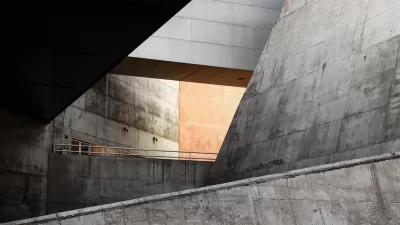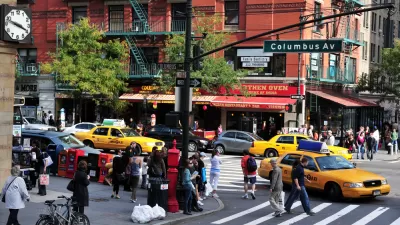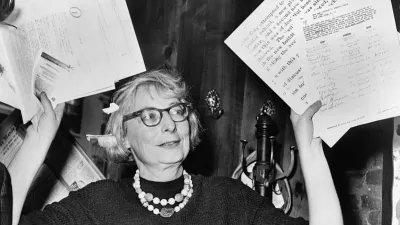The machine-city envisioned by Le Corbusier, and made into practice in decades of modernist bureaucracy, has ultimately produced, according to Simon Richards' essay, an antisocial environment, against which urban planning seems to be now reacting.
"Why is socializing in cities taken to be a good thing? Why do we assume it is beneficial for people to experience urban variety, opportunity, and intrigue? These are not questions normally asked, and it feels perverse to frame them as questions. Still, we have not always been so sure about socializing in cities. We have forgotten the negative argument - that the unregulated social life of large cities is a corrupting influence best avoided. It had never occurred to me to raise these questions until I began research on Le Corbusier. At the same time that he is celebrated as the visionary architect of such modernist masterpieces as the Villa Savoye (1928) and the pilgrimage chapel at Ronchamp (1955), he is decried as an irresponsible and perhaps mentally disturbed city planner. In his Plan Voisin from 1925, for example, Le Corbusier proposed to demolish the center of Paris and replace it with towers in parkland. The prospect of German cities bombed flat by the Allies during World War II made him envious - the Germans were able to rebuild from ground zero. (Incidentally, many British planners offered thanks to the Luftwaffe for returning the favor.) He made plans that would mean (as he put it himself) the "Death of the Street." In proposing the elimination of side alleys and shops, in granting limited space for cafés, community centers, and theaters, in dispersing them over great distances, and constructing them of uninviting concrete, glass, and steel, Le Corbusier expressed his contempt for the teeming hubbub that urbanists now esteem "
Thanks to Alessandro Busa'
FULL STORY: The Antisocial Urbanism of Le Corbusier

Alabama: Trump Terminates Settlements for Black Communities Harmed By Raw Sewage
Trump deemed the landmark civil rights agreement “illegal DEI and environmental justice policy.”

Planetizen Federal Action Tracker
A weekly monitor of how Trump’s orders and actions are impacting planners and planning in America.

The 120 Year Old Tiny Home Villages That Sheltered San Francisco’s Earthquake Refugees
More than a century ago, San Francisco mobilized to house thousands of residents displaced by the 1906 earthquake. Could their strategy offer a model for the present?

Indy Neighborhood Group Builds Temporary Multi-Use Path
Community members, aided in part by funding from the city, repurposed a vehicle lane to create a protected bike and pedestrian path for the summer season.

Congestion Pricing Drops Holland Tunnel Delays by 65 Percent
New York City’s contentious tolling program has yielded improved traffic and roughly $100 million in revenue for the MTA.

In Both Crashes and Crime, Public Transportation is Far Safer than Driving
Contrary to popular assumptions, public transportation has far lower crash and crime rates than automobile travel. For safer communities, improve and encourage transit travel.
Urban Design for Planners 1: Software Tools
This six-course series explores essential urban design concepts using open source software and equips planners with the tools they need to participate fully in the urban design process.
Planning for Universal Design
Learn the tools for implementing Universal Design in planning regulations.
Clanton & Associates, Inc.
Jessamine County Fiscal Court
Institute for Housing and Urban Development Studies (IHS)
City of Grandview
Harvard GSD Executive Education
Toledo-Lucas County Plan Commissions
Salt Lake City
NYU Wagner Graduate School of Public Service





























